- Things To Do
- Events
- Food & Drink
-
Places To Go
- Winnipeg
- Churchill
- Eastern Region
- Central Region
- Interlake Region
- Parkland Region
- Western Region
- Manitoba North
- Must-See Destinations
-
Itineraries
- Island Getaway on the Prairies
- Wheat City Wanderings in Brandon
- Escape to the water and the wild
- St. Boniface Winter: Passion and History
- Follow the path to a story in Neepawa
- Unleash your inner Viking this winter
- Explore Clear Lake this winter like never before
- Breathe in the Whiteshell this winter
- Go North for a boreal forest escape
- Treaty Areas
- Where To Stay
- Trip Essentials
- #ExploreMB Blog
Navigation Options
- FREN
- Things To Do
- Events
- Food & Drink
-
Places To Go
- Winnipeg
- Churchill
- Eastern Region
- Central Region
- Interlake Region
- Parkland Region
- Western Region
- Manitoba North
- Must-See Destinations
-
Itineraries
- Island Getaway on the Prairies
- Wheat City Wanderings in Brandon
- Escape to the water and the wild
- St. Boniface Winter: Passion and History
- Follow the path to a story in Neepawa
- Unleash your inner Viking this winter
- Explore Clear Lake this winter like never before
- Breathe in the Whiteshell this winter
- Go North for a boreal forest escape
- Treaty Areas
- Where To Stay
- Trip Essentials
- #ExploreMB Blog
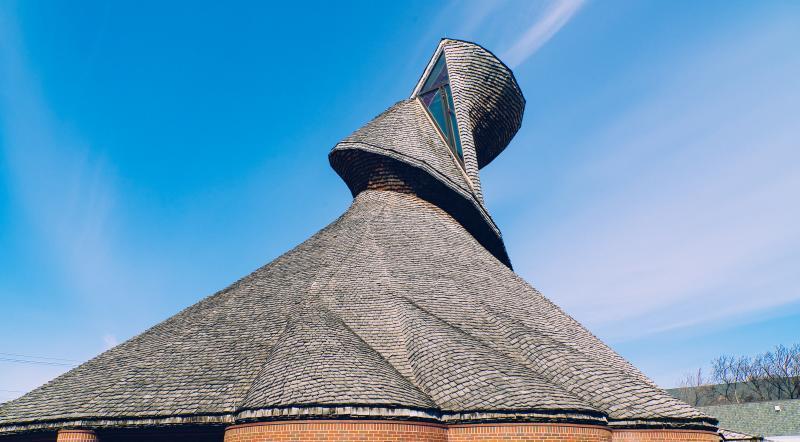
Winnipeg’s first heyday was in the early 20th century when the Manitoba capital had one of the fastest growing economies in North America. There was more construction happening in Winnipeg in 1904 than in Toronto and Montreal combined, which resulted in the country’s tallest building and first skyscraper, part of what would become a fine collection of turn-of-the-century architecture. In the mid-century disciples of key modernists taught at the University of Manitoba’s Architecture school and left a second legacy of architecture in the city. Now the city is enjoying a new architectural moment in the sun with innovative, green and boldly designed buildings garnering awards and the world’s attention. For more architectural goodies, download our digital magazine here.
The Exchange District
The Cube Architect: 5468796 Architecture
Old Market Square, Winnipeg
The 20-block Winnipeg Exchange District is home to North America’s greatest collection of heritage buildings. Built from the late 1880s to the outbreak of World War I, the neighbourhood comprises warehouses, financial institutions, and some of North America’s first skyscrapers, all done up in detailed and beautiful Beaux Art or Chicago-style architecture. The buildings are now home to some of Winnipeg’s hippest fashion, lifestyle and design stores, start-ups, galleries, restaurants and coffee houses.
Now the turn-of-the-century buildings are welcoming bold new architecture to their side, buildings that sparkle with thoughtful design and innovation: The Cube in the middle of leafy Old Market Square is a cube-shaped, stand alone performance stage, clad in chain mail-like aluminum; it’s a hub for Fringe Festival performances and sets during the Winnipeg Jazz Festival. Red River College’s Exchange District campus has spruced up the facades of a row of historic buildings on Princess Avenue and juxtaposed them with a modern atrium and a Leeds-certified new building.
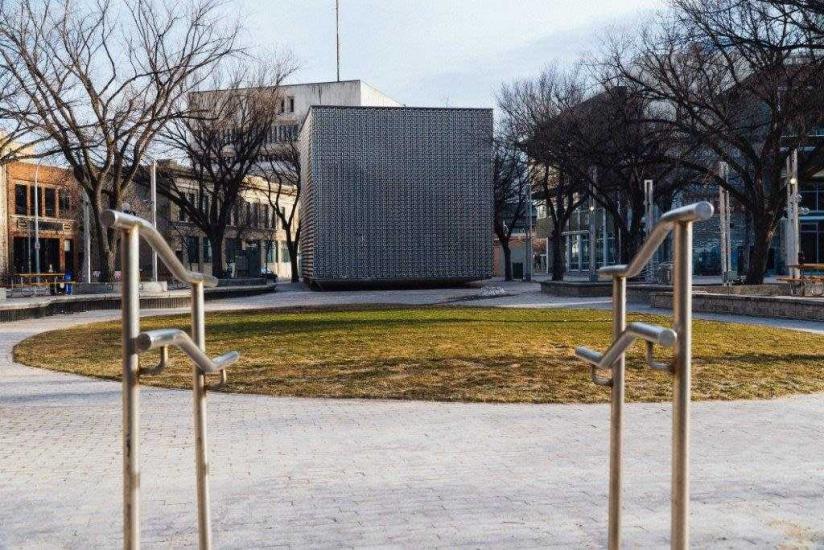
Église du Précieux Sang
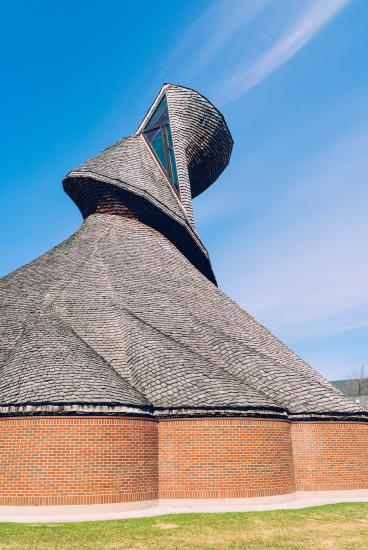
Architect: Etienne Gaboury
200 Kenny Street, Winnipeg
The 1967 Précieux Sang (Precious Blood) Church, designed by legendary Manitoba architect Etienne Gaboury, is among the greatest works of Winnipeg’s modernist architecture legacy and reflects the creativity and forward-thinking vibrancy of the architecture scene in Winnipeg of the ‘50s and ‘60s. The spiralling structure, swirling up to the heavens, is constructed largely of cedar wood. The upward movement is mirrored on the inside but its scale and curving low brick walls also gives it the intimacy and warmth of a suburban home. The primarily Métis church also took subtle inspiration from the form of a teepee.
The Esplanade Riel
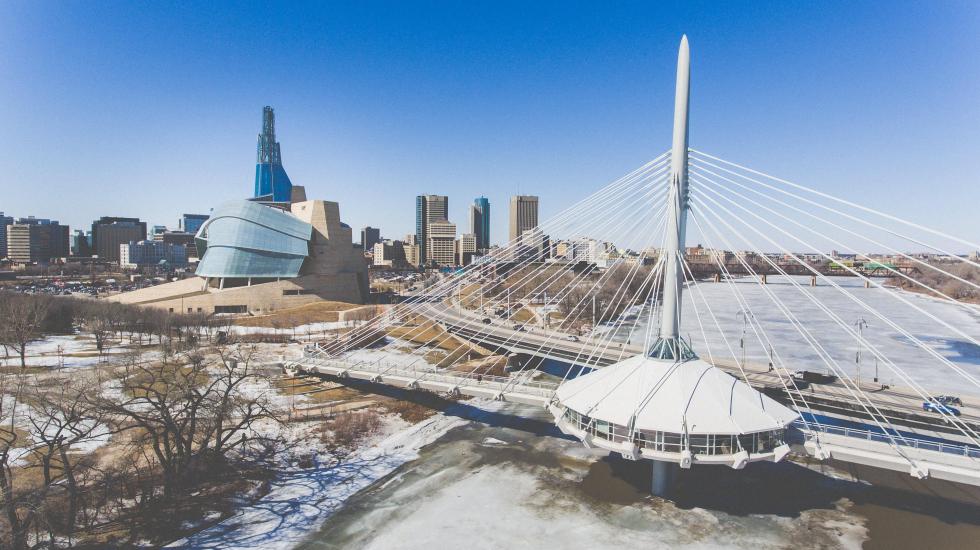
Architect: Colin Douglas Stewart of Wardrop Engineering and Étienne Gaboury
The Forks/St. Boniface, Winnipeg
This pedestrian bridge that theatrically links downtown and the French-speaking quarter of St- Boniface is a symbol of Winnipeg’s history and its future. Named after Métis hero Louis Riel, the bridge was warmly welcomed by Winnipeggers when it opened in 2003. Its iconic white spires rise like an elegant sail over the Red River with its peak soaring 57 meters high. The bridge is more than a crossing path; it’s a meeting place in the middle of a river.
The Esplanade Riel is the only bridge in North America with a restaurant built into it. Restaurant tenant Mon Ami Louis, whose menu is Francophone-inspired, is housed in a cantilevered semi-circular plaza that juts over the Red River providing stellar views of the city.
St. Boniface Cathedral
Architect: Étienne Gaboury and Denis Lussier
190, avenue de la Cathédrale, Winnipeg,
It’s nearly impossible to wander into St. Boniface and miss the striking and iconic facade of the St. Boniface Cathedral-Basilica. Known as the Mother Church of Western Canada, the original church was built by Archbishop Langevin in 1894. Before it was destroyed in a fire on July 22, 1968, the cathedral was the largest Roman Catholic cathedral in Western Canada. Today’s cathedral was blessed in 1972 and exists in two portions; the modern structure that still functions as a church, and the historical limestone structure that dominates the site.
The facade remains an incredible example of French Romanesque style architecture, evidenced by arched openings, the open-air shell and the amazing detailing of floral motifs. While the Cathedral is certainly a sight to behold, the real story lies in its surrounding cemetery grounds. Here, notable individuals such as Louis Riel, Jean-Baptiste Lagimodière and Marie-Anne Gaboury lay to rest.
The Royal Canadian Mint
Architect: Etienne Gaboury
520 Lagimodière Boulevard, Winnipeg
Piercing the prairie sky on the eastern edge of the city, the Mint is a later work by Etienne Gaboury opened in 1976. The building is thoughtful in design, especially its striking triangular tower with a slightly copper glow, an indication of what goes on inside (i.e. the minting of shiny new coins). Tours of the coin factory are a popular summer activity for families, and guests enter through the dramatic, fine-cut pavilion that serves as greeting area and boutique. (Fun fact: Winnipeg’s factory actually mints the coins of many foreign countries such as Cuba, Papua New Guinea, and Norway.). In a witty nod to the reflecting pools you throw coins into, there is a large reflecting pool on the grounds surrounding the building. As drivers pass by along the TransCanada highway,they can see the building’s tower reflected in the pond, meant to echo the silver grain silos that pop up along the rural Manitoba landscape.
The Winnipeg Art Gallery
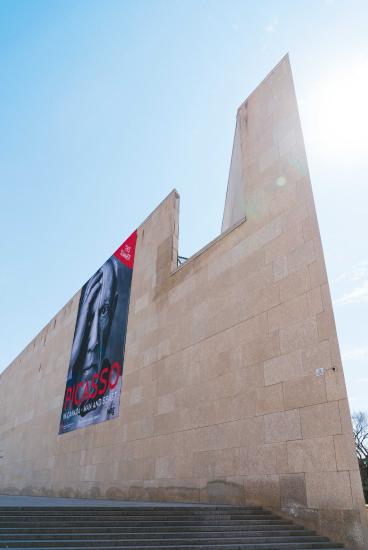
Architect: Gustavo Da Rosa
300 Memorial Boulevard, Winnipeg
The Winnipeg Art Gallery was opened in 1970 by Princess Margaret, a bold work designed by architect Gustavo Da Rosa. The arrowhead-shaped museum, slicing northward, is clad in Manitoba’s unique fossil-bearing Tyndall stone. It was a foreword thinking piece of architecture at the time, engaging with its exterior surroundings while being airy, welcoming and technologically advanced on the inside.
As Manitobans continue to attend the WAG’s blockbuster art shows in record number, they also have one eye on the space next door, which is the site of the upcoming Inuit Art and Learning Centre, which will house the WAG’s 11,000-piece collection of Inuit art, the largest in Canada. Its slightly amorphous design (the bid awarded to noted L.A.-based architect Michael Maltzan) draws on the ephemeral qualities of northern environments, but still complements the WAG’s own razor-sharp design.
Manitoba Hydro Place
Architect: Kuwabara Payne, McKenna Blumberg Architects with Smith Carter Architects
360 Portage Avenue, Winnipeg
Manitoba Hydro Place is renowned as uber energy-efficient with features like loads of natural light, a geothermal system, and a solar chimney that all contribute to its ability to consume 70% less energy than typical office towers. But perhaps its most important role is how it has transformed the vibe of Portage and Graham Avenue in the city’s business district. When it opened in 2009, it was named the best tall building in the Americas by the Council on Tall Buildings and Urban Habitat. More accolades followed: It was first of its kind in Canada to receive a LEED platinum rating by the Canada Green Building Council, and it received the Royal Architectural Institute of Canada national urban design award.
From street level, the look of the sleek glass building stands out too, especially when columns of opened awning windows create an artful design the length of the tower. Inside the chic gallery atrium two small waterfalls cascade over granite walls, replicating the spillway of a hydroelectric generating station. In summer and early fall, the landscaped public courtyard along Graham Avenue hosts downtown’s only farmer’s market.
The Canadian Museum for Human Rights
Architect: Antoine Predock
85 Israel Asper Way, Winnipeg
Antoine Predock won the sought-after architecture competition to design Canada’s first national museum built outside of Ottawa. Opened in 2014, the Canadian Museum for Human Rights, standing at The Forks in downtown Winnipeg, is a cutting-edge work of star-chitecture with bold references to facets of Manitoba topography, First Nation culture and the treaty land it stands on. The museum has brought a Bilbao effect to Winnipeg, making the city a must-stop on the museum and architecture tourism circuits. Its elegant, spiraling tower has already become an icon of the city. Inside, stories of human rights, aberrations and aspirations, are told, and the architecture helps tell them.
Visitors arrive via a subterranean entrance and then ascend to the museum’s galleries along illuminated Spanish alabaster ramps. The museum experience literally moves from darkness to light, until guests reach the pinnacle Tower of Hope, and descend via a glass elevator which takes them to the Mongolian basalt rock-strewn interior Garden of Contemplation, a quiet place for reflection and probing questions and discussions about Human Rights.

